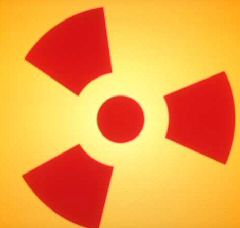
The use of depleted uranium in munitions and weaponry is likely to come under intense scrutiny now that new research that found that uranium can bind to human DNA. The finding will likely have far-reaching implications for returned soldiers, civilians living in what were once war-zones and people who might live near uranium mines or processing facilities.
Uranium – when manifested as a radioactive metal – has profound and debilitating effects on human DNA. These radioactive effects have been well understood for decades, but there has been considerable debate and little agreement concerning the possible health risks associated with low-grade uranium ore (yellowcake) and depleted uranium.
Now however, Northern Arizona University biochemist Diane Stearns has established that when cells are exposed to uranium, the uranium binds to DNA and the cells acquire mutations, triggering a whole slew of protein replication errors, some of which can lead to various cancers. Stearns’ research, published in the journals Mutagenesis andMolecular Carcinogenesis, confirms what many have suspected for some time – that uranium can damage DNA as a heavy metal, independently of its radioactive properties. “Essentially, if you get a heavy metal stuck on DNA, you can get a mutation,” Stearns explained. While other heavy metals are known to bind to DNA, Stearns and her team were the first to identify this characteristic with uranium.
Her research may shed light on the possible connection between exposure to depleted uranium and Gulf War Syndrome, or to increased cancers and birth defects in the Middle East and Balkans. And closer to home, questions continue to be asked about environmental exposure to uranium from mine tailings; heavily concentrated around Native American communities. “When the uranium mining boom crashed in the ’80s, there wasn’t much cleanup,” Stearns said. Estimates put the number of abandoned mines on the Navajo Nation in Arizona at more than 1,100.








Comments are closed.